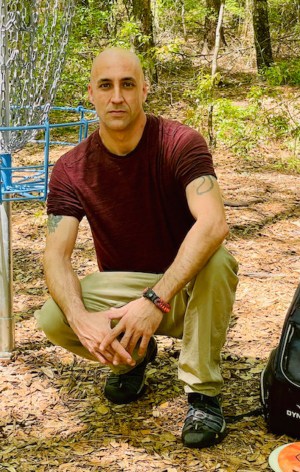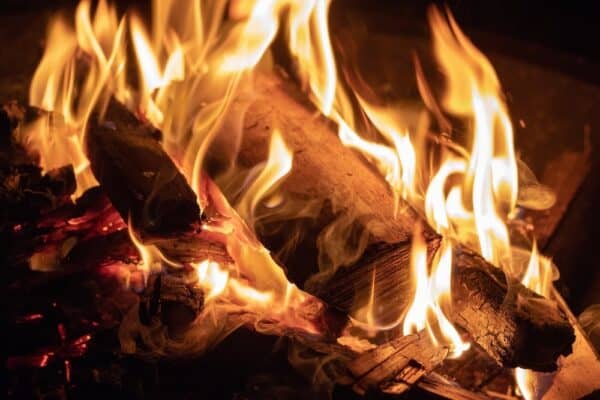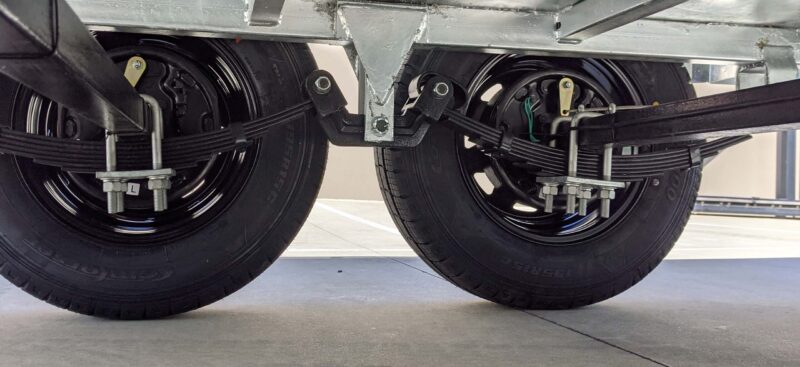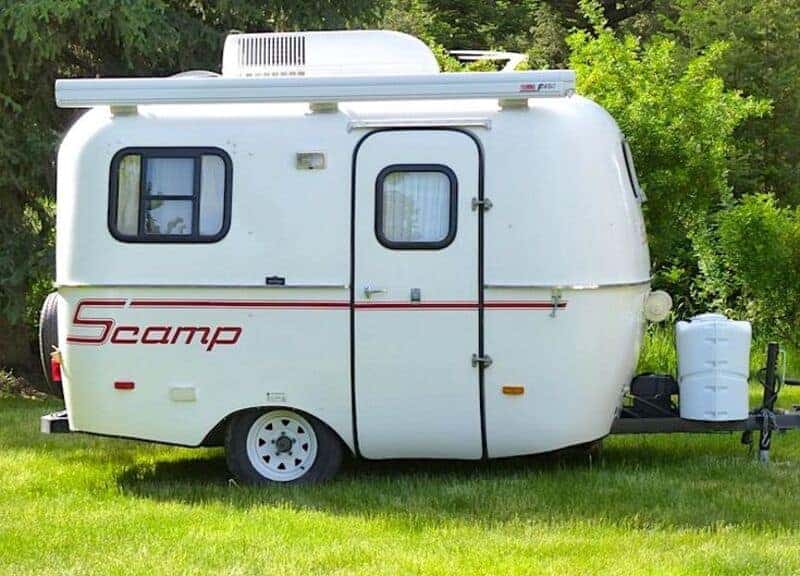What’s the point of going camping without bringing along some wood for campfires? You can’t camp without a campfire. It’s practically sacrilegious. If it’s your first time splitting and hauling firewood (or, maybe cheating a little and buying a stack from someone else), there are a few things worth knowing beforehand.
First, not all firewood is created equally, and the best species of wood for campfires are hardwoods, such as oak, hickory, maple, cedar, ash, black cherry, birch, beech, and even dogwood in a pinch.
Hardwoods burn better than softwoods and, with as many campfires as we’ve made over the years, whether hunting, hitting the road for a long adventure, or just boondocking out in the middle of nowhere, softwoods won’t cut it, except in specific circumstances.
What Species Of Firewood Do Campgrounds Use?
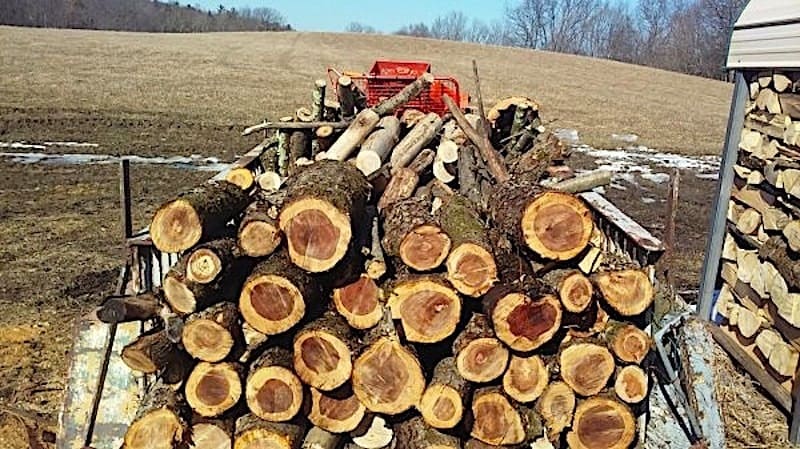
Any Hardwoods will do the trick and have your fire roaring in no time, especially if you season them well beforehand. If you don’t have any on hand, you can’t just romp off into the woods and start cutting down trees.
First, whatever tree you cut down is far more difficult to burn than seasoned wood. Second, most campgrounds will express immense displeasure at you cutting down trees. Always keep in mind that if it isn’t your property, you need to ask someone before you break out the ax and start hunting the nearest oak.
Even felled trees are off-limits in most cases. On the bright side, most campgrounds will sell firewood. The park ranger station, a store within the campgrounds, or the campground host are all people and places you can check with.
Unfortunately, many places will sell softwoods simply because they are cheaper. The problematic side effect is a rapid burn and a lot of sparks. Softwood simply burns too rapidly, pops a lot, and is often very smokey. However, that doesn’t mean Softwood doesn’t have a purpose, but more on that later.
5 Best Species Of Wood For Campfires
Just about any dry, hardwoods will do. When you burn wood like seasoned oak, it produces the kind of coals that will keep a fire going well into the night.
Also, when you wake up in the morning, those coals will be hot enough to get the fire roaring again in no time.
1. Hickory Wood For Campfires
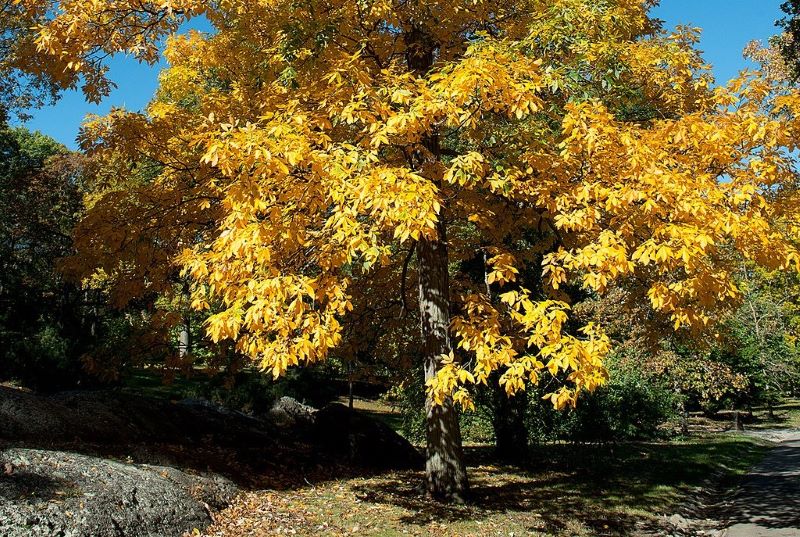
If you want the high heat you get from burning a softwood, without the drawbacks, and retaining the attributes of burning oak, hickory is your answer. It also has a great campfire aroma and is a good choice if you want to cook directly over the campfire.
2. Oak For Campfires
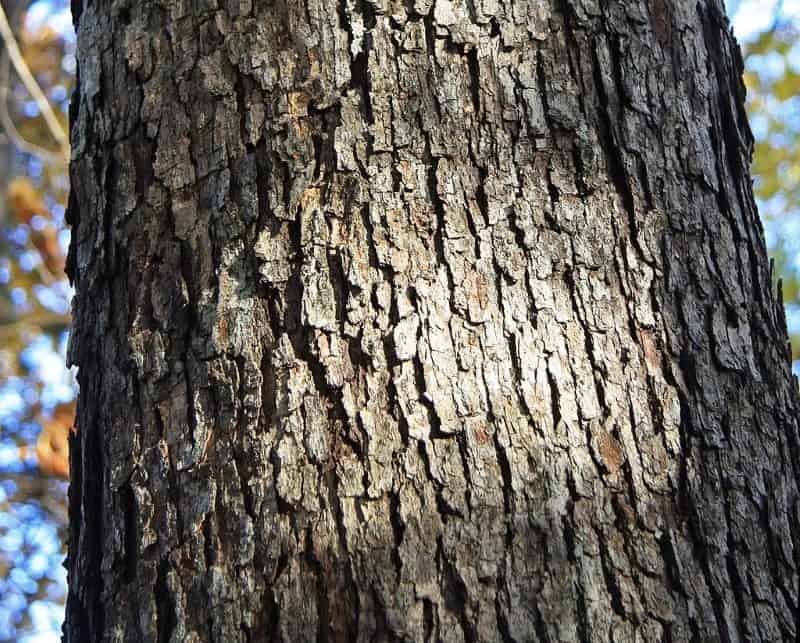
Oak is the perfect, all-around wood for campfires. It’s a slow burn, leaves behind large, solid coals, and is readily available. If you travel around quite a bit, oak is an easy firewood to get your hands on, no matter where you end up.
3. Cedar Wood For Campfires
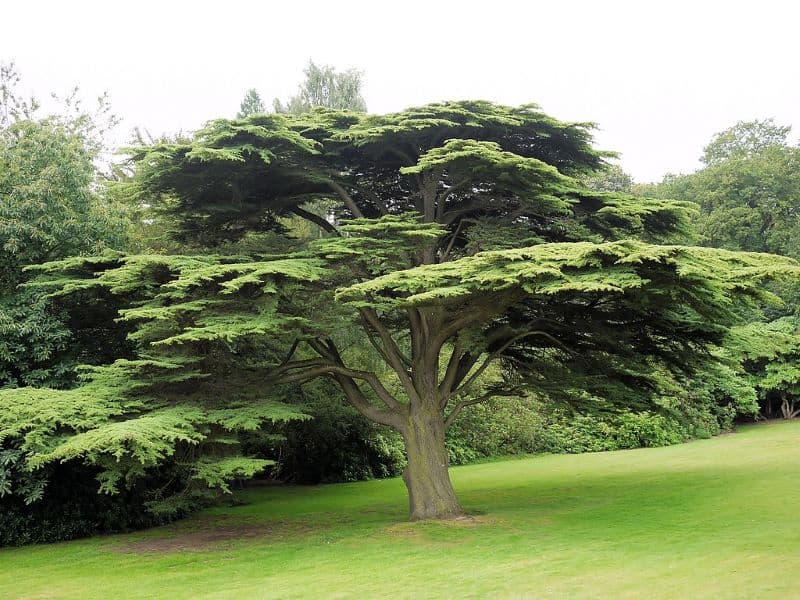
Cedar is another slow-burning wood for campfires that has an excellent aroma. It burns very hot, though it lacks the consistency of oak and hickory. However, it’s an exceptional wood to mix in with either of the two.
4. Beech For Campfires

If you’re heading up towards New England, or just about anywhere in the northeast, you’ll find that beech is much more prevalent than anywhere in the south. It doesn’t push a lot of smoke in your face, burns hot and consistently, and lacks those pops that will have you dodging hot chunks of flying wood.
5. Birch Wood For Campfires
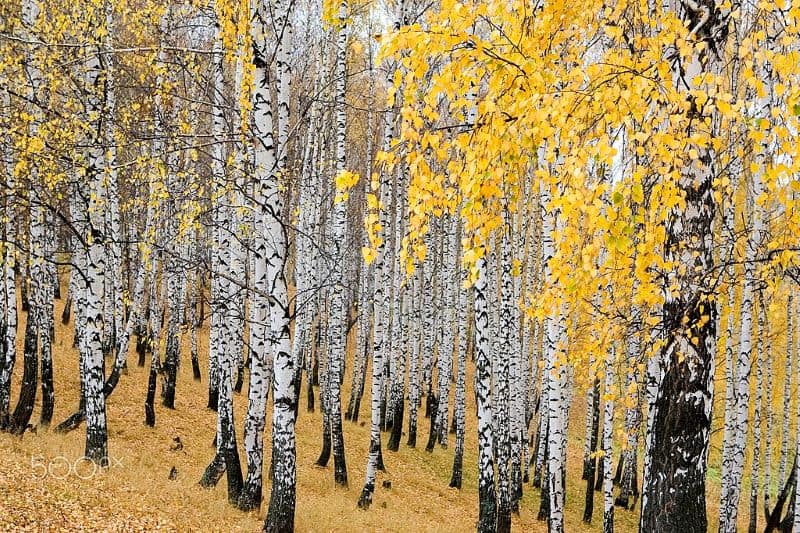
Birch is a good mixture or a solid method for getting the fire started. It burns too hot and fast for consistent use but will help get those larger chunks of oak and hickory burning well into the night. While it’s not the premier choice of wood for campfires, it’s still better than most softwoods.
Dogwood, maple, black cherry, and ash are all good choices as well, and their availability is more or less, depending on where in the U.S. you’re setting up camp for the evening.
What Is Kiln Dried Wood?
Whenever we mention seasoned wood, it’s because of how much more effective it is as a firewood. Seasoned wood is simply wood that’s cut and laid out for a season to dry. Kiln-dried wood is the act of removing moisture from the wood using a kiln (oven).
Inside a kiln, wood heats to specific temperatures while accounting for the humidity or steam level. Unlike a regular oven, you have direct control over how much moisture you remove from the wood. It’s a good way to season wood to an exacting standard.
With a kiln, you achieve in a day what normally takes an entire year, or close enough. If you want plenty of seasoned wood for future campfires, kiln drying it is a rapid way to get as much as you need when you need it.
What Is Green Wood?
Green wood is not good for campfires. It’s the wood you get immediately after cutting down a tree and chopping it into firewood. It’s full of moisture and is terrible for simple burning. If you’re looking for a good way to smoke out the entire campground, throw green wood on the fire.
Once you’re done chopping your firewood and stacking it up, it’s all green and needs to sit for a long time or go into a kiln or air chamber for rapid drying. The moisture content in green wood is too high for consistent burning and should only be used if you have nothing else and the fire is already roaring.
Will Wet Firewood Burn?
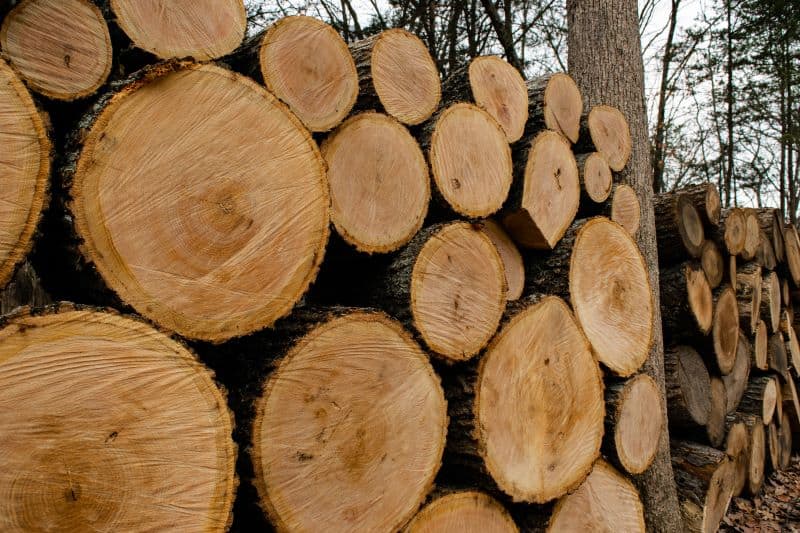
It certainly will, especially if it’s seasoned firewood. It’s not the best wood to throw on campfires in the beginning but, once you get the fire nice and hot, wet firewood that’s properly seasoned will burn just as well as the rest.
Some people lump wet firewood into the same category as green firewood. Technically, green firewood is wet because it holds a lot of moisture. However, in this case, we’re just referring to wood that’s out in the rain for a little while. It’s still perfectly fine for burning.
Now, if the wet wood is out in the rain for a very long time, it may take a while to get going, producing a lot more smoke as the water escapes the wood.
What’s The Best Fire Starter?
While there is a best wood for campfires, there’s also a best starter wood. Some of these are flammable enough that you don’t need anything other than a match or a lighter to get it going. If you prefer the flint and steel method, it will do for any of these as well.
- Lighter’d wood or knots
- Dryer lint
- Dry wood shavings
- Newspaper
- Lighter or matches
- Flint and steel
- Flammable putty
- Fire sticks
If you’re looking to keep things as old-fashioned as possible, lighter’d wood (fatwood) and a flint and steel will start a fire in the middle of the rain. Lighter’d wood (southern terminology), is pine wood from a felled or downed pine tree. It hardens and dries out over time, forming a seriously flammable chunk of wood.
Lighter’d will burn hot and fierce, almost at the same level you get from drowning a fire in lighter fluid.
If you take small shavings off the lighter’d wood, creating the perfect, highly flammable kindling bed is simple. All it takes is a shower of sparks to get it going. Everything else on the list is fairly self-explanatory. Depending on your location, lighter’d wood may not form as well as in others. South of the Mason-Dixon line, the stuff is abundant.
Lighter’d is by far the best wood for campfires, when you just want to get it started now, rain or shine.
Can You Take Your Own Firewood To Campgrounds?
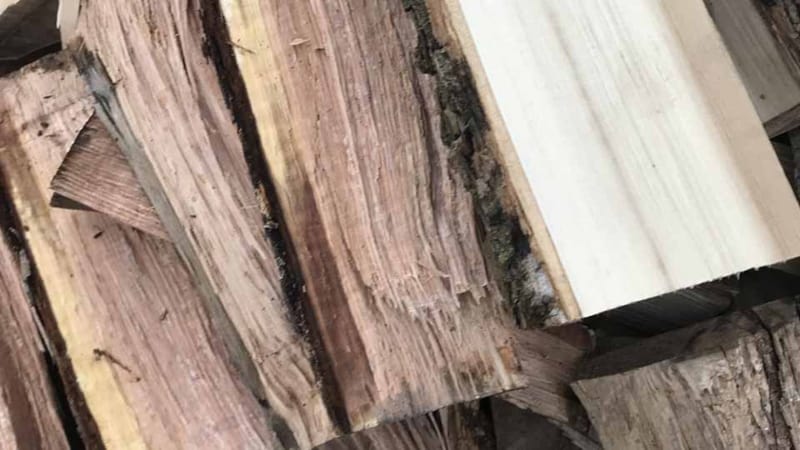
It really depends on the campground. There are different rules in different places. Some campgrounds discourage it for fear of firewood coming from another state.
We wrote up an entire article about transferring firewood long distances, and it’s worth a read since it can get you in some trouble if you aren’t aware of the law.
It’s best to avoid getting your wood for any of your campfires from the campground itself. They charge a higher price than you’re likely to find locally. Even with the extra gas spent from running around, and purchasing firewood from local sellers, you’ll still save some extra money.
If you have firewood from one campground, and it’s not packaged and store-bought, check the laws in whatever areas you plan on heading to. Also, check with campgrounds ahead of time if you plan on purchasing firewood, and do a price check.
Nowadays, it’s much easier to locate local firewood sellers through Facebook, Next Door, and other social media apps.
Final Thoughts About Wood For Campfires
Hardwood is the best type of wood for campfires. At least that’s true for long, sustained campfires that last well into the night.
If you are able to get the campfire roaring again from the previous night’s coals, you have hardwood in there. Softwood has its uses, maybe as a mix or to help get the fire going, but not for the long term. Find you some lighter’d knots to stack up, and you’re all set.
Related Reading:
– 25 Campground Rules Everyone Should Follow
– 12 RV Packing Tips for a Smooth Camping Trip
– 12 Best Off-Road Travel Trailers for 2024
– What Gear Comes With A New Travel Trailer?
About the Author:
Thomas Godwin is a full-time freelance writer with a BFA in Creative Writing, a U.S. Marine, and an avid outdoorsman.
When he’s not writing, he’s raising chickens and Appleyard ducks. Thomas also constructs teardrop campers (attempting to anyway) and kayaks the Blackwater River with his wife, two daughters, and his Dobermans.
